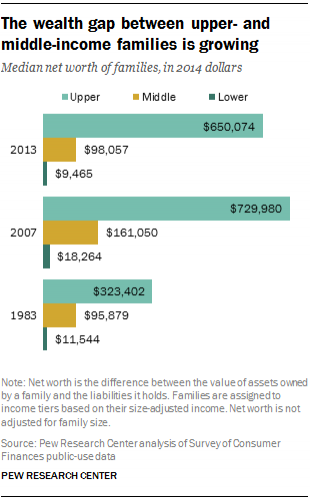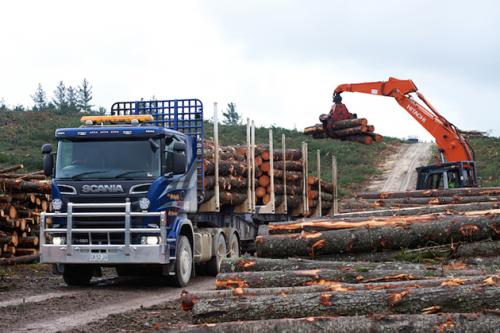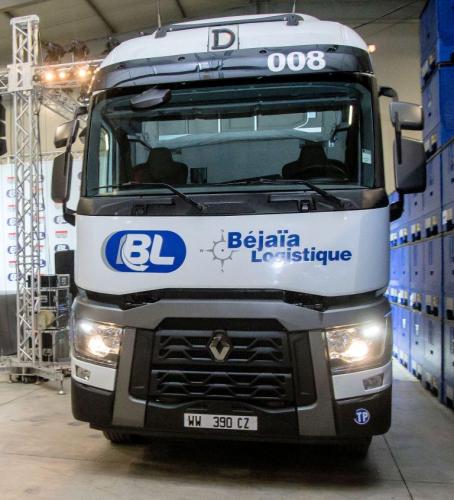
kscarbel2
Moderator-
Posts
18,550 -
Joined
-
Days Won
112
Content Type
Profiles
Forums
Gallery
Events
Blogs
BMT Wiki
Collections
Store
Everything posted by kscarbel2
-
Dearborn inarguably has a huge Muslim population, but that article is fake. ------------------------------------------------------------------------------- City of Dearborn Responds to Satirical 'Sharia Law' Article Dearborn Patch / October 30, 2013 On Sunday, a satirical website called the National Report published an article claiming that Dearborn has become the first U.S. city to "fully implement Sharia Law." The story quickly made its way around the internet and it seems many people did not understand the [in bad taste] joke. According to the City of Dearborn, city hall employees have received multiple phone calls from people asking whether the story is true. The city has responded to these questions by sending out the following press release: A satirical website called the National Report intentionally made up an article for entertainment purposes on Sunday, Oct. 27 about the City of Dearborn enacting sharia law over the weekend. The article is false; Dearborn is not under sharia law and has never at any time even considered such an action. “Dearborn has never been, nor ever will be, under sharia law. We are governed by the U.S. Constitution, the Constitution of the State of Michigan and the City of Dearborn Charter,” said Mayor O’Reilly. “We are a city named after a Revolutionary War Hero. We have lost loyal Dearborn American military service personnel in every war this country has fought to protect the individual rights we are guaranteed through the U.S. Constitution,” he said. “We are a community that proudly honors those who served our country to protect those rights. We have annual observances on Memorial Day, Flag Day, Korean War Armistice Day and Veterans Day,” said Mayor O’Reilly. The phony article appeared on the National Report, a website [allegedly] meant to be humorous, and has since been posted on other websites and circulated over the internet. “The National Report’s misguided attempt at humor furthers the goals of some people who have tried to suggest that the City of Dearborn is anti-American because our population includes residents who are Muslim,” said Mayor O’Reilly.
-
Feds Arrest 'Emir' of ISIS Recruitment Effort in Minnesota ABC News / December 10, 2015 The FBI-led Joint Terrorism Task Force has arrested a Minnesota man for leading an effort inside the United States to send others to join ISIS in Syria. Abdirizak Mohamed Warsame,20, was arrested Wednesday night and charged with conspiring to provide material support to a terrorist organization. He is among over 10 people from Minnesota's Somali-American Muslim community who began planning to join ISIS more than a year ago. Nine have now been arrested, and one -- 18-year-old Abdi Nir -- made it to Syria, where since May 2014 he has been recruiting and assisting others inside the United States to join ISIS. Warsame’s arrest comes several months after a round of arrests in the case. Warsame and others began watching propaganda videos together in the spring of 2014, when they also began talking about how to get to Syria. At one point, when one of the leaders of the group was planning to leave for Syria imminently, Warsame was appointed “emir” of the effort, and he subsequently began encouraging and helping others plan to join ISIS. Warsame and Nur considered robbing people to pay for travel to Syria, but Nur rejected the idea and said they should steal from the government instead, prosecutors allege. Warsame called Nur “a genius. Nur described risks involved in the entire effort this way to Warsame: “It’s like playing a game of chess, bro. One thing you move you can be in danger, or you could win.” Warsame is one of 90 people from inside the United States identified by the FBI as having been inspired to take action on behalf of ISIS. .
-
Germany's Merkel has gone out of her way to welcome a million refugees, a high percentage of them being Muslims. Now, Germany is allowing the Muslims to enact Sharia (Islamic Law) in Germany. In other European countries, there appears to be little of any "push back" from the governments there as well. Shocking.
-
Oklahoma mother and boyfriend arrested for rape and murder of 4-year-old Associated Press / December 10, 2015 An Oklahoma couple has been arrested for the rape and murder of their woman's four-year-old daughter. Deputies had been alerted just after midnight on Nov. 15 by a hospital in Owasso saying a 4-year-old child had been presented to the hospital unresponsive. She was later pronounced dead at the hospital. Washington County Sheriff's deputies arrested 26-year-old Courtney Le'ann Hansche and her boyfriend, 27-year-old Michael Nordbye Tuesday on charges stemming from the death of her 4-year-old daughter, Jaydenn Hansche. Courtney Hansche was arrested on charges of murder in the first degree, rape by instrumentation, child abuse and child neglect. Michael Nordbye was arrested on charges of murder in the first degree, rape by instrumentation and child abuse. The arrests come following 'an intensive investigation' conducted by the Washington County Sheriff's Office investigators, Washington County District Attorney's Office and the OSBI. The manner of death is listed as homicide by the Oklahoma State Medical Examiner's office. Their bond has not been set and they are being held in Washington County Jail. .
-
MACK Belly Dump
kscarbel2 replied to 41chevy's topic in Antique and Classic Mack Trucks General Discussion
http://www.bigmacktrucks.com/index.php?/topic/30224-your-mack-off-highway-truck-line/?hl=mack+pack#entry168494 -
German court lets off 'Sharia police' BBC News / December 10, 2015 A German court has ruled that Islamists who patrolled a German city's streets as "Sharia police" did not break the law and will not be prosecuted. Nine were arrested in September 2014 after patrolling streets in Wuppertal, western Germany. They wore bright orange jackets with the words "Sharia police". They told passers-by not to frequent discos, casinos or bars. The court said they had not violated laws on uniforms and public gatherings. Prosecutors have now lodged an appeal. The group of Salafists - ultra-conservative Islamists - included Sven Lau, a preacher whose passport was seized this year after he visited Syria and a photo surfaced, showing him posing on a tank, with a Kalashnikov rifle slung around his neck. He is suspected of trying to recruit Muslims to join jihadists fighting in Syria or Iraq and has spent some time in prison previously. He said he had gone to war-torn Syria in 2013 on a humanitarian mission. All aspects of a Muslim's life are governed by Sharia, the revealed, sacred law of Islam. The group's appearance at night in Wuppertal, in the industrial Ruhr region, triggered sharp criticism in Germany. The group also carried notices proclaiming in English a "Sharia Controlled Zone". The notices spelled out prohibitions like those in force in some Gulf Arab countries, outlawing alcohol, drugs, gambling, music and concerts, pornography and prostitution. Activists in the anti-Islam Pegida movement - campaigning to stop immigration to Germany - demonstrated in Wuppertal last year. They have staged regular marches against "the Islamisation of Germany" nationwide. .
-
An indisputable murderer, and the government decision will be for the taxpayer to pay a million dollars to incarcerate him for decades until death. And for the victims, particularly the family of the murdered medical student, where is the justice and closure? -------------------------------------------------------------------------------------------------------------------- New Orleans murderer kidnapped, raped couple day after shooting Tulane medical student The New Orleans Times-Picayune / December 9, 2015 Euric Cain, the man indicted in the shooting of Tulane medical student Peter Gold, was accused Wednesday (Dec. 9) of kidnapping and raping a couple that police said he carjacked less than 24 hours after shooting Gold. Cain, 21, already is jailed on a $6 million bond after his Dec. 3 indictment for the shooting. Now New Orleans Police Department (NOPD) investigators say video and DNA evidence links Cain to the couple's kidnapping and rape less the day after the shooting. Cain was booked Wednesday with two counts of first-degree rape, two counts of second-degree kidnapping, two counts of armed robbery and two counts of carjacking in connection with the couple's attack, reported Nov. 21 at 3 a.m. The victims in the two incidents are not connected other than by Cain being accused in the crimes. In Gold's shooting, prosecutors said Cain was the man captured on video surveillance robbing and attempting to kidnap a woman around 4 a.m. Nov. 20 in the Lower Garden District. New Orleans police said Gold, 25, attempted to intervene in the crime and was shot in the stomach by Cain. Cain has pleaded not guilty to the shooting. NOPD investigators said Cain is the man seen on a chilling video sequence shooting Gold in the midsection and then attempting three times to shoot Gold in the head, only to have his gun jam. The second attack occurred when a male-female couple was entering a car parked near St. Philip and Henriette Delille streets in Treme early Nov. 21. Cain hopped into the back seat of their car and demanded the couple's cash and credit cards at gunpoint. Cain ordered the woman to drive the car about four miles away to the parking lot of an abandoned school near Abundance and Press streets in the Desire neighborhood. There, Cain ordered the couple into the back seat of the car. Cain raped the woman, according to an arrest warrant affidavit. Cain then also forced the man to perform oral sex on him at gunpoint. When the assaults finished, Cain ordered the victims out of the car and threatened to kill them if they notified police. Cain drove away in their car and the victims called police from a nearby store. Cain was arrested two days later in connection to Gold's shooting, when authorities learned he had been driving and was in possession of the black Ford Focus stolen from the raped couple. NOPD Sex Crimes Detective Keisha Ferdinand wrote in her request for an arrest warrant that police obtained video evidence showing Cain using one of the couple's stolen credit cards at a store. On Dec. 3, Ferdinand wrote, the Louisiana State Police Crime Lab returned a DNA match from ejaculate fluid left on the raped woman to an existing sample from Cain in the CODIS database. On Tuesday, police confirmed with the victim that she did not know nor engage in consensual sexual acts with Cain, and the warrant was approved early Wednesday morning. Nictoria Washington, described as Cain's 17-year-old girlfriend, was indicted last week on the allegation of being an accessory after the fact to attempted first-degree murder in Gold's shooting. Police said Washington harbored Cain at a home in the 2200 block of Delachaise Street, where he was arrested Nov. 23. Washington is not mentioned in court documents as a party to the carjacking and rape allegations. Cain's bond was increased by $1 million, to $7 million total, based on the new allegations. Cain faces a mandatory life sentences if convicted of his charges. Washington faces a prison term of up to five years if found guilty. .
-
The Financial Times / December 9, 2015 America’s middle class has shrunk to just half the population for the first time in at least four decades as the forces of technological change and globalisation drive a wedge between the winners and losers in a splintering US society. The ranks of the middle class are now narrowly outnumbered by those in lower and upper income strata combined for the first time since at least the early 1970s, according to the definitions by the Pew Research Center, a non-partisan think-tank in research shared with the Financial Times. The findings come amid an intensifying debate leading up to next year’s presidential election over how to revive the fortunes of the US middle class. The prevailing view that the middle class is being crushed is helping to feed some of the popular anger that has boosted the populist politics personified by Donald Trump’s candidacy for the Republican presidential nomination. “The middle class is disappearing,” says Alison Fuller, a 25-year-old university graduate working for a medical start-up in Smyrna, Georgia, who sees herself voting for Mr Trump. Pew used one of the broadest income classifications of the middle class, in a new analysis detailing the “hollowing out” of a group that has formed the bedrock of America’s postwar success. The core of American society now represents 50 per cent or less of the adult population, compared with 61 per cent at the end of the 1960s. Strikingly, the change has been driven at least as much by rapid growth in the ranks of prosperous Americans above the level of the middle class as it has by expansion in the numbers of poorer citizens. Jason Furman, chairman of President Barack Obama’s Council of Economic Advisers, says: “You have seen a hollowing out of the middle of the income distribution, and there’s neither one cause for it nor a single answer. It’s a big problem, it is decades in the making, and it will require a lot of solutions.” Recent political debate has been dominated by the view that US society has been distorted by staggering gains for the top 1 per cent of the country at the expense of the remaining 99 per cent. Pew’s research gives a more nuanced picture however. Better off households — defined by Pew as earning more than $125,608 a year — account for more than one-in-five of the US population. That is the highest share the study has found, as well-educated Americans from finance to computer programming and biotech enjoy strong prospects. “On balance, there is more economic progress than regression,” the report says. But the campaign of Mr Trump, the real estate tycoon, has fed off concerns at the other end of the scale. The Fullers have a three-bedroom home but about $100,000 in student debt. While Ms Fuller is uneasy with some of Mr Trump’s policies, she says she thought “Trump overall would be good for this nation,” arguing he is likely to reduce the tax burden on the middle class. While Democrats and Republicans have vowed to revive the middle class, they have not settled on the term’s meaning. Pew divides the population into two lower groups, the middle, and two upper tiers. Pew defined the middle as being a household income from two-thirds to double the median. For a three-person family, that is $41,869 to $125,608 a year. Since 2008, the number of adults in households in the upper two tiers has grown by 7.8m, outpacing the growth in the number of adults in households in the lower two tiers, where the number of people grew by 6.8m. The middle class grew by 3m over the same period. The research also tracks different demographic groups to find the winners and losers in recent decades. Older Americans were the biggest gainers by far in terms of their progression up the income tiers during the current century, and also when compared with the start of the 1970s, it finds. The group aged 18-29 has seen the biggest slide. A key factor driving the wedge between successful Americans and those who are struggling is the outsized premium the labour market places on skills and higher education. College graduates are eight times likelier to live in the upper income tiers than adults who did not finish high school, and twice as likely as an adult who has only a high school diploma, Pew finds. “Those Americans without a college degree stand out as experiencing a substantial loss in economic status,” the report says. David Autor, a professor at Massachusetts Institute of Technology, has found that the earnings gap between the median college-educated US male and the median male with a high school education doubled between 1979 and 2012, underscoring the mounting premium placed on educational achievement. “There hasn’t been a lot of wage growth, but it is still the case that the return on educational investments is incredibly high for people who go to reasonable colleges and complete them,” he says. Focusing entirely on the disparity between the top 1 per cent and the 99 per cent is therefore misleading. “It gives people the wrong message that if you are not Mark Zuckerberg or Bernie Madoff you are kind of out of the game,” Mr Autor adds. “That is not correct.” The sense of polarisation in US society is underscored by the rapid growth seen at the extreme rich and poor ends of the spectrum. “The distribution of adults by income is thinning in the middle and bulking up at the edges,” says Pew’s report. Households above the middle class are on the cusp of holding more income than all other households combined, suggesting earnings are getting concentrated in fewer hands. Upper income Americans more than doubled their wealth gap as against the middle from three times as much to seven times, according to the report. Pew’s data, which draw on official numbers, adjust for inflation and put everyone in a three-person household to make figures more comparable. Their research finds that the hollowing of the American middle has been under way steadily since the 1970s, rather than being a sudden phenomenon that emerged recently. The FT interviewed Americans around the US to hear their views on the state of the middle class and their place in it. Their comments range from the insecurity felt by public sector workers, whose numbers were cut sharply after the Great Recession, to the optimism of high-tech workers who have been among the big winners in a jobs market that prizes skills and high educational attainment. Together, they represent a society that is looking increasingly fractured. Julie Ruhlen works in one of the wealthiest counties of the US, but she says the idea of living there is out of her reach. Ms Ruhlen is a state school teacher at Harper Park Middle School in Loudoun County, Virginia, a leafy suburb dotted with multimillion dollar mansions that is one of the richest localities in the US. Like many public school teachers, however, she has to supplement her income with a part-time job — in her case, working at one of the state’s wineries — to maintain the lifestyle she wants. Teachers have been among the poorest performers in terms of income mobility since the 1970s. Among the 14 professions tracked by Pew between 2001 and 2014 they have suffered the biggest slide down the income ladder as states have slashed budgets, resulting in stalled wages or job cuts for a broad range of middle-class public sector workers. “It is not just affecting me personally but also the people I am out there to help,” said Ms Ruhlen, who commutes 50 minutes each way to work. “I could do so much more if I were able to live in the community where I teach.” Incomes for teachers vary sharply depending on where they work, and Pew’s data suggest that the profession still has more members of the upper and middle tier than the employed population as a whole. Still, belt-tightening among many in the US has left a shortage of 375,000 public school teachers, according to estimates by The Economic Policy Institute, a left-leaning think-tank. Nationwide, public school teachers’ salaries were 3.5 per cent lower in 2013-14 than a decade earlier, in real terms, according to the National Education Association. In Virginia, teachers have seen a 2.8 per cent decline since 2003-04, it said in a report this year. The average Virginia classroom teacher earned $49,826, below the national average of $56,610. “I don’t consider myself middle class,” said Tina Williams, a school counsellor based in Fairfax, Virginia, who has a part-time job working in a department store. “I remember [when I was] growing up the teachers who educated me seemed to live a lot more comfortably than I do.” Amid the long slow decline of America’s manufacturing sector, it looked like blue-collar jobs such as Amber Barnard’s would soon be a thing of the past. But things are looking up for the mother of three. After 11 years working on an assembly line in Seymour, Indiana, she is seeing her wages rise and her skills improve. She was recently promoted, received an increase to $20.75 an hour, which brings her salary to about $43,000 per annum before overtime, and her company is paying for her to attend university-level business courses. The Cummins diesel engine plant where she works has been in town for decades. But in the past five years it has had a $300m upgrade and a new 95-litre engine is being launched. What was once an ageing plant with an unproductive workforce is a model of modern manufacturing. Seymour displays evidence of a town on the rebound. Cummins opened a research facility adjacent to a plant that employs 400 engineers, and other groups are also expanding. “Everybody around me seems to be . . . making more money,” says Ms Barnard. “Everybody is growing and businesses are doing well.” It helps that her husband is holding down an equally good job at a Toyota forklift plant nearby. But the lives they live now are materially different than they were during the recession. Three years ago, they bought a house four blocks from the Cummins plant. Two years ago, they went to Myrtle Beach in South Carolina for a family holiday. This year they are planning a road trip out west to tour Yellowstone and other national parks. The American middle class is not as blue collar as it once was. In 1971, 28 per cent of adults in middle-income households were in manufacturing. Today that figure is 11 per cent. But those who have managed to hang on to jobs in manufacturing remain an important part of the middle class, even as some predict factory jobs may be affected by a fresh wave of automation. Cummins’ Seymour plant uses robots but Tom Linebarger, the company’s chief executive, sees a limited role for them in factories that make highly customised products. The flexibility of Seymour’s labour force is one of the keys to its success. “It costs you a lot to get flexibility with robots,” Mr Linebarger says. Even in tough times the factory jobs look safer than in the past. When Cummins announced lay-offs this year to cope with a downturn, it found ways to cut hours and keep more staff on board. Those jobs that went were from Cummins’ professional ranks rather than the factory floor. For now, at least, Ms Barnard’s place in the middle class appears safe. Liz Heath has been waiting for five years but work is finally under way on the renovation that will more than double the size of her 1927 bungalow in Atlanta’s gentrifying Grant Park neighbourhood. It helps that Ms Heath is an architect and drew the plans for the 3,100-square-foot renovation herself. But beyond fulfilling a long-held goal, her project is a sign of renewed confidence. After starting her career in the shadow of the 2008-09 recession, Ms Heath senses that she and her peers are living in a more hopeful economy. “We came out of school and after a few years we hit a point where we were earning less than we did out of school,” she says. “But since then things have started moving forward. We are feeding back in to the economy.” Ms Heath has been the beneficiary of a boom in professional services, such as architecture, that has yielded what is now a much more white collar middle class. In 1971, 18 per cent of the American middle class worked in business and professional services; today, one-third of it does. Almost one in three of the 66,000 jobs that the Atlanta area added in the year to August were in business and professional services. That pattern holds true nationally, with business and professional services representing the fastest-growing segment of the labour force over the past year. Of the 2.9m jobs the US added in the year to August, more than 650,000 were in these services, or almost six times as many as the new jobs added in manufacturing. That growth is reflected at tvsdesign, Ms Heath’s firm, which has built a niche in designing convention centres and has half a dozen projects in China alone. After laying off staff in the wake of the 2008 financial crisis it has been hiring again and now has about 150 people on its books. It also poses new problems for cities like Atlanta. After years of weathering a slow economy the big challenge confronting Atlanta, says Tom Cunningham, chief economist for the Metro Atlanta Chamber of Commerce, is attracting skilled workers. “We have had much more steady immigration of jobs than people,” Mr Cunningham says. After spending a few years living “a nice retired-lady life”, Evie Osterman, 75, decided it was time to return to work. She is the full-time office manager at Miracle Ear and spends her days speaking in a loud, clear voice to potential clients and helping customers handle glitches in their hearing aids. “Let’s face it, you retire thinking you have enough money, but here’s the big variable. No one knows how long you are going to live,” she says, sitting in a small neat office. While she and her husband could get by without her working, they would have to cut back, she says. “It is hard for people in the middle class today to be able to survive. Life gets more and more expensive.” While people over 65 have made the greatest strides up the income ladder since the early 1970s, statistics suggest more retirement-age Americans are seeking work. The 65 and over demographic is the only group that has seen an increase in its job participation rate since the start of the decade. Projections from the McKinsey Global Institute suggest that between 2015 and 2030, no less than half of consumer spending growth will be driven by people aged 60 and above. For a vision of future trends, policymakers could do worse than visiting Sarasota County, Florida, a seaside retirement community with a median age of more than 53, as opposed to the national level of 37. Many spend their days playing mah-jong and bridge but not everyone does. “It’s not a struggle but we have to watch our nickels and dimes. Luckily this part-time job does help me meet our expenses,” said Norman Gassman, a former shoe-store owner who is a visitor guide in a mall. While the poverty rate among those 65 and older fell to 10 per cent last year compared with nearly 25 per cent in the 1970s, members of this demographic are more likely to be lower income than any other age group. Rising medical costs, longer lifespans and squeezed retirement benefits will add to pressure on senior citizens and the public purse in decades to come. The son of computer scientists, Will Hansmann remembers being taught the BASIC computer language by his mother while still in elementary school. By the time he was seven, he was disassembling mainframes that his father brought home from work. His childhood served him well. He now oversees software development at Uptake, a fast-growing start-up that is part of Chicago’s technology industry. The company’s software analyses data to spot potential failures in machines and systems. His position puts him among the uncontested winners in the US economy; software developers earned a median $93,350 in 2012, compared with a national median of $34,750, according to government figures. The number of these jobs exceeded 1m that year and is set to grow by over 200,000 by 2022. The common theme among the US winners is higher education. Forty-one per cent of Americans with at least a college degree are in the upper tier of earners, according to Pew. Eleven per cent of high school graduates were in that top bracket, as were five per cent of those did not graduate from high school. The path to Uptake was not straightforward, though. Mr Hansmann’s first venture after graduating from the University of Illinois in aerospace engineering in the 1990s failed after burglars made off with the computer hardware. The experience marked only a temporary setback to Mr Hansmann. “I am in technology so I am always an optimist,” he says. “The economy has recovered dramatically in the last six years.” He describes the state of the middle class as “vibrant”. Chicago, with 53,000 tech jobs and 3,200 digital companies, is among dozens of US cities that are trying to burnish their credentials as start-up hubs. The question the city struggles with is how to spread the benefits. The city has about 850,000 people living in “distressed” postcodes, according to the Economic Innovation Group. These are areas with high unemployment, poverty and poor educational attainment. Many of those neighbourhoods are just minutes away from downtown and its tech glitterati. The Article - http://www.ft.com/intl/cms/s/0/98ce14ee-99a6-11e5-95c7-d47aa298f769.html The Pew Report - http://www.pewsocialtrends.org/2015/12/09/the-american-middle-class-is-losing-ground/ ------------------------------------------------------------------ Methodology: The Middle and the Rest There are any number of ways to define the middle class — it can be a state of mind, or a reflection of whether someone owns their own home, or whether they do white-collar work. Pew Research Center definitions are based strictly on income groups, adjusted for household size, in 2014 dollars: Lowest income Households with less than half the overall median income: less than $31,000 a year in 2015. Lower-middle income Households from one-half to less than two-thirds the overall median income: between $31,000 to $42,000 a year in 2015. Middle income Households with an income that is two-thirds to twice overall median income: between $42,000 to $126,000 a year in 2015. Upper-middle income Households with an income that is between twice and three times overall median income: between $126,000 to $188,000 a year in 2015. Upper income Households with an income that is more than three times the median, or more than $188,000 a year in 2015. .
-
Prime Mover Magazine / December 10, 2015 South Australia-based logging company H&L Scheidl has added a group of 620 hp Scania V8-powered prime movers to its fleet. According to H&L Scheidl, the Scania V8s have been popular with its drivers due to its comfortable cab and the Scania hydraulic retarder brake booster that provides fade-free stopping. “I found the Scania to be very comfortable. In fact, I felt fresher when I got out after the shift than when I got in. The Scania is sure-footed in the forests and gives us great traction which means more safety,” said Jim Smith, H&L Scheidl operator. Fellow H&L Scheidl driver, Dave Jones, agreed. “I have found the Scania Retarder to be absolutely brilliant. I pretty much only touch the service brakes right at the end of the braking cycle. I’m using the Retarder for about 85 per cent of the braking, and it really does make life easier especially on the fatigue side,” he said. “Another Scania benefit is the visibility. Compared to a bonneted truck, the Scania has a really wide windscreen and none of those air cleaners or stacks intrudes into your vision, and it does make a big difference, especially in the forest, and at night, as well. The truck also has a really tight turning circle, too.” According to H&L Scheidl, the 620 hp Scania V8 prime movers are being used to tow 44-tonnes of logs on Elphinstone designed and built logging trailers. .
-
California mother tortures, murders daughter, abuses 4 other children Associated Press / December 9, 2015 Authorities have charged 42-year-old Amy Chavoya of Madera Ranchos with torturing and killing her daughter, and with abusing four other children in her home. Sheriff's deputies arrested her last month after a yearlong investigation. The documents describe horrific acts against the little girl who died and other children who were in the suspect's care. Prosecutors say the abuse went on for several years. The allegations in the complaint against Chavoya are chilling. Prosecutors say she began abusing Mariah Flores back in 2011 by beating the little girl, depriving her of food, forcing her to take scalding hot showers and using a stun gun. Then on October 10, 2014, Chavoya murdered her daughter in a way that involved torture. The girl was about 12 when she died. Chavoya abused four other children over the past four years, including a boy who was stabbed and forced to eat dishwasher soap pods. According to the suspect's Instagram page, she adopted at least three of the children after being their foster parent. Chavoya's husband is allegedly a deputy sheriff. Chavoya is being held without bail and is scheduled to appear in court for a preliminary hearing on Friday. .
-
Renault Trucks Press Release / December 9, 2015 Renault Trucks Algeria has scored a 159 tractor order from Béjaïa Logistique, a subsidiary of the IFRI Group. The customer has been presented with the keys to 94 Range C 440-horsepower 4x2 tractors, and will receive another 65 units in January 2016. Designed for markets outside Europe, the Renault Trucks C features a reinforced chassis and suspension adapted for the operating conditions found in the countries concerned. At the same time, it offers an “on road” type cab offering all the comfort needed for long-distance transport. The modular design of the C range makes it possible to meet every kind of need long-distance haulage customers may encounter. This series has been designed to offer users the perfect balance between low fuel consumption, on-board comfort and safety. Thanks to the new cab’s aerodynamic form, developed and tested in a wind tunnel, this range is particularly efficient in terms of fuel consumption and energy efficiency. The Renault Trucks C vehicles delivered to Béjaïa Logistique are all equipped with Optidriver automated manual transmissions (AMT). .
-
14 people murdered in California shooting, 17 injured (updated)
kscarbel2 replied to kscarbel2's topic in Odds and Ends
Associated Press / December 9, 2015 The two San Bernardino Muslim shooters were radicalized at least two years ago and had discussed jihad and martyrdom as early as 2013, one year before they married, FBI Director James Comey said Wednesday. Comey told the Senate Judiciary Committee that investigators believe that Syed Rizwan Farook and his wife, Tashfeen Malik, were radicalized even before they began their online relationship and that Malik held extremist views before she arrived in the U.S. last year. He told the panel that the two "as early as the end of 2013 were talking to each other about jihad and martyrdom before they became engaged and married and were living in the U.S." The disclosure means that Malik's radicalization had already begun when she applied for a visa to come to the U.S. to get married, and that the government's vetting process failed to detect it. Comey said he didn't know enough to say whether weaknesses in the visa process enabled her to enter the U.S. Malik came to the United States in July 2014 from Pakistan after being approved for a K-1 (fiancé) visa. Homeland Security Secretary Jeh Johnson has said the Obama administration is now reviewing the program. He refused to say what changes were being considered. Malik married Farook the following month. Farook was born in Chicago in 1987 and raised in southern California. The FBI director described the couple as an example of homegrown violent extremists who radicalized "in place," drawing a distinction between the San Bernardino attack and the one last month in Paris that officials suspect involved planning and training in Syria. Comey declined to say what role, if any, encrypted communications played in last week's massacre. Though he said the Obama administration was not seeking to address concerns over data encryption on smartphones, he said he remained concerns that criminals, terrorists and spies were using such technology to evade detection. "Increasingly, we are unable to see what they say, which gives them a tremendous advantage," he said. He said one of the gunmen in last May's shooting outside a Prophet Mohammed cartoon contest in Garland, Texas had exchanged more than 100 messages prior to the attack that investigators still had been unable to access. -------------------------------------------------------------------------------------- Christian Broadcasting Network and Regent University founder Pat Robertson denounced Islam on his “The 700 Club” program on Tuesday, calling it “a political system masquerading as a religion.” “I think what we’ve got to do in terms of Islam is identify what it is,” Robertson said on the long-running show. “Islam is a political system that is intent on world domination. It isn’t a quote, religion, as such; it’s a political system masquerading as a religion.” -
Bronx man rapes 6-year-old girl NBC New York / December 8, 2015 A 35-year-old man has been sentenced to 25 years to life in prison for raping his girlfriend's 6-year-old daughter in the Bronx. The crime was discovered when the victim's mother went through his cellphone and saw he had videotaped the attack, according to prosecutors. Virgilio Ocampo was found guilty Tuesday of predatory sexual assault against a child and use of a child in a sexual performance following a three-week trial. Prosecutors said Ocampo and the child's mother had been dating for two years at the time of the attack and he had been staying in the mother's apartment several days a week. In January 2014, the mother looked through Ocampo's phone while he was sleeping and saw a video date-stamped from the month before showing Ocampo having sex with her daughter. That day, she reported the attack to police, but by that time Ocampo had already left the apartment. Ocampo fled to Louisiana, where police took him into custody 10 days later. Ocampo admitted to police that he sexually assaulted the victim on the day he created the video, as well as on other occasions. The victim, who is now 8, has been in and out of psychiatric facilities since the attack and is suicidal, Justice Margaret Clancy said before the sentencing. The child has been diagnosed with PTSD and other psychiatric conditions as a result of the rape. “Your Honor, this man does not deserve to ever walk these streets after all the pain he has caused my daughter, my little angel. He is a sick man and is a danger to women and children he would ever come in contact with," the mother's statement said. "This monster took a 6-year-old and raped her continuously. He videotaped it so he can watch it over and over again. He is disgusting. Hell is not even worthy of him." Judge Margaret Clancy sentenced Ocampo to the maximum extent of the law. In doing so, she said it was horrifying to witness the man rape the child on videotape and said he has shown no remorse. .
-
Why are people protesting across the street from the White House with Arabic language flags? (English is the language of the United States) .
-
You're right Tim, the 90s vintage were the definitive F-Series. And that one is cherry.
-
Ex-Australia PM Tony Abbott says Islam must reform BBC / December 8, 2015 Former Australian Prime Minister Tony Abbott has sparked criticism by saying Islam has a "massive problem" and needs to reform. Writing in Australian media, Mr Abbott said "not all cultures are equal" and the West should stop apologizing for defending its values. Opposition leader Bill Shorten said the comments were "counterproductive". [shorten believes speaking in terms of reality is counterproductive] Current Prime Minister Malcolm Turnbull said the vast majority of Muslims were "appalled" by extremism. [Turnbull lives in a dream world] Turnbull said it was "absolutely vital to ensure that we don't make the mistake, which is what the terrorists want us to do, of tagging every single Muslim with the responsibility for the crimes of the few". While it was "no revelation" that there were violent elements in the Muslim world, the religion is compatible with democracy and an open society, he said, and most victims of extremist groups are Muslims. Turnbull said his comments on extremism were always "carefully calculated" to "make Australia safer and to make the work of our security services less difficult than it already is". Abbott was removed as prime minister by a party vote in September amid poor poll ratings and is now a backbench MP. Before his political career he had trained to be a Catholic priest. Abbott’s letter cautioned against "demonizing" Muslims, but said the West "can't remain in denial about the massive problem within Islam". "Although most Muslims utterly reject terrorism, some are all too ready to justify 'death to the infidel'," Abbott said. "Islam never had its own version of the Reformation and the Enlightenment or a consequent acceptance of pluralism and the separation of church and state. "It's not culturally insensitive to demand loyalty to Australia and respect for Western civilisation. Cultures are not all equal. "We should be ready to proclaim the clear superiority of our culture to one that justifies killing people in the name of God." Abbott also said only Muslims could tackle supporters of violent extremism, and that "everyone interested in a safer world should be reaching out to 'live and let live' Muslims and encouraging them to reclaim their faith from the zealots". Nail Aykan, executive director of Islamic Council Victoria, told the BBC Mr Abbott's comments were "completely unhelpful at a time when we are trying to foster unity and social cohesion in Australian society". He advised Mr Abbott to "go out and meet some real local Muslims and get their perspective before you start patronising a whole population".
-
Kiwi Titan pure porn
kscarbel2 replied to mrsmackpaul's topic in Modern Mack Truck General Discussion
But it's just not the same without that yank Maikshilo behind the wheel.- 1 reply
-
- 1
-

-
Death sentence upheld for 'torture' murder of 2-year-old boy December 3, 2015 The Pennsylvania State Supreme Court on Thursday upheld the death sentence for a York County man convicted of murdering a 2-year-old boy he was baby-sitting. A county jury found Aric Shayne Woodard, now 42, guilty of first-degree murder in 2013 for the slaying of Jaques Twinn. Woodard beat the child to death in November 2011 in a home in York. Woodard said he hit the boy after finding him smearing himself with feces, then ordered him upstairs to clean up. Police responded to a 911 call and found the toddler in cardiac arrest. Woodard was holding the child, who was wet, naked and smelled of feces. Investigators concluded Woodard had hit the boy so hard in the abdomen that the child's liver was lacerated. The multiple injuries Jaques suffered showed the child was tortured. "There is sufficient evidence...to conclude that (Woodard) intentionally inflicted a considerable amount of pain and suffering upon Jaques that was unnecessarily heinous, atrocious or cruel, manifesting exceptional depravity beyond a mere intent to kill," Justice Max Baer wrote. .
-
Murder an innocent toddler and you only get charged with child endangerment...........go figure. Until confirmed murderers (indisputable situations) are summarily executed, we will continue see our crime rate soar, and the health of American society plummet. -------------------------------------------------------------------------------------------------------- Chicago mother beats 2-year-old toddler to death Associated Press / December 2, 2015 An 18-year-old pregnant woman whose toddler was temporarily taken away last year by the Illinois Department of Children and Family Services was (only) charged with child endangerment after she beat the girl so badly for not eating her lunch that she died over Thanksgiving weekend. Jazmine Jones punched 2-year-old Elliana Claiborne multiple times in the stomach and buttocks on November 28. Jones later admitted to authorities that she hit the child. Jones then left the child at the home of her boyfriend where she was residing, to go buy marijuana. The boyfriend is not the biological father of the child. Often, depending how frustrated she was, Jones would punch the girl, prosecutors said. Jones has had many prior contacts with DCFS, according to prosecutors. Last year Elliana was taken into DCFS custody after Jones threw her off a balcony, causing her to land on snow-covered cement below, said Assistant Cook County State’s Attorney Kim Przekota. Last weekend, when Jones returned to her boyfriend’s home after buying pot, she gave the toddler laxatives and juice because the child appeared sick, couldn’t use the bathroom, had a swollen stomach and complained about stomach pain, Przekota said. Later that evening, the boyfriend’s mother heard the child fall down the stairs and suggested the child be taken to the hospital. The mother ignored the advice. In the middle of the night, Elliana moaned about her stomach and threw up a greenish liquid. The boyfriend’s sister put Elliana back to bed but noticed that the child was lying with her eyes opened. The next morning, a family member went to wake the child and found that she had soiled herself and was “cold and stiff.” The boyfriend allegedly tried to perform CPR on the child and a yellowish liquid came out of the girl’s mouth. Jones and the boyfriend took the child’s body to St. Bernard Hospital where she was pronounced deceased. According to the Cook County Medical Examiner’s Office, Elliana died of multiple blunt force trauma, specifically injuries caused by a direct blow to the abdomen, not by a fall down the stairs or an accident. Elliana also suffered bruises on her head, abdomen, face, back and arms. She had healing burns on a foot, healed scars and two rib fractures. Judge Laura Sullivan ordered Jones held on $1 million bail. .
-
Oklahoma man sexually abuses, murders 1-year-old girl Reuters / December 7, 2015 An Oklahoma man has been arrested on a murder charge for beating and sexually abused the 1-year-old daughter of his girlfriend. Cody Johnson, 30, and his girlfriend brought an unresponsive Sawyer Paige Jefferson to a Tulsa hospital on Saturday, claiming that the girl had tripped over her pajamas and fallen on a toy. The little girl was in cardiac arrest and unresponsive. Doctors found the girl had "numerous visible facial contusions and bruising and bleeding coming from both the child's vagina and rectum." The baby was placed on life support, but she never regained consciousness. She was pronounced dead a short time later. Johnson was arrested on Sunday on charges of first-degree murder of a minor, child abuse and sexual abuse of a minor. As of Monday morning, Johnson was in the Tulsa County Jail. Bond has been set at $100,000 for the two abuse complaints with no bond given for the murder complaint. .
-
Since acquiring Mack Trucks, Volvo has continually forgotten how they got to the party. The Mack customer base was loyal, unlike ordinary customers which switched brands like socks as they purchased that day's lowest price truck. Volvo has been entirely focused on melding Mack into the Volvo empire (changing the Mack truck into a superior Volvo). Unlike Renault, Volvo never had any interest in understanding and appreciating Mack Trucks for what it was. To Volvo, buying Mack was but a means to an end.
-
With all due respect (we're friends), I still see rust from bumper to taillamps on all the new Mack trucks at the dealers. A PDI can't correct the situation that the chassis was not primed before it was "cheaply) painted. And the newer trucks are frequently in the shop, translating to well over 75 percent of their activity being warranty repairs. Today's Mack is not the product of 20 years ago. It has evolved into a cheap disposable truck. This all goes back to an old topic............http://www.bigmacktrucks.com/index.php?/topic/2094-is-volvo-good-or-bad-for-mack-trucks/page-8
-
Paccar Press Release / December 9, 2015 Paccar’s board of directors today declared an extra cash dividend in the amount of one dollar ($1.00) per share, payable on January 6, 2015, to stockholders of record at the close of business on December 19, 2014. The board of directors also declared a regular quarterly cash dividend in the amount of twenty-two cents ($.22) per share, payable on March 5, 2015, to stockholders of record at the close of business on February 13, 2015. Mark Pigott, executive chairman, shared, “Paccar’s excellent profits and strong cash flow have enabled the company to invest in new innovative quality vehicles, expand its aftermarket distribution centers and enhance its production facilities.” “Paccar’s results reflect strong truck sales in the U.S. and Canada, and excellent aftermarket parts and financial services results worldwide,” said CEO Ron Armstrong. “Paccar’s North American customers are benefiting from good economic growth, record freight tonnage, lower fuel prices, and the excellent operating efficiency of our industry-leading Kenworth and Peterbilt trucks. Kenworth and Peterbilt U.S. and Canada Class 8 truck orders through November were 46 percent higher compared with the same period last year. U.S. and Canada Class 8 truck industry retail sales this year are expected to be the highest since 2006.”
-
DAF Trucks Press Release / December 8, 2015
BigMackTrucks.com
BigMackTrucks.com is a support forum for antique, classic and modern Mack Trucks! The forum is owned and maintained by Watt's Truck Center, Inc. an independent, full service Mack dealer. The forums are not affiliated with Mack Trucks, Inc.
Our Vendors and Advertisers
Thank you for your support!



























